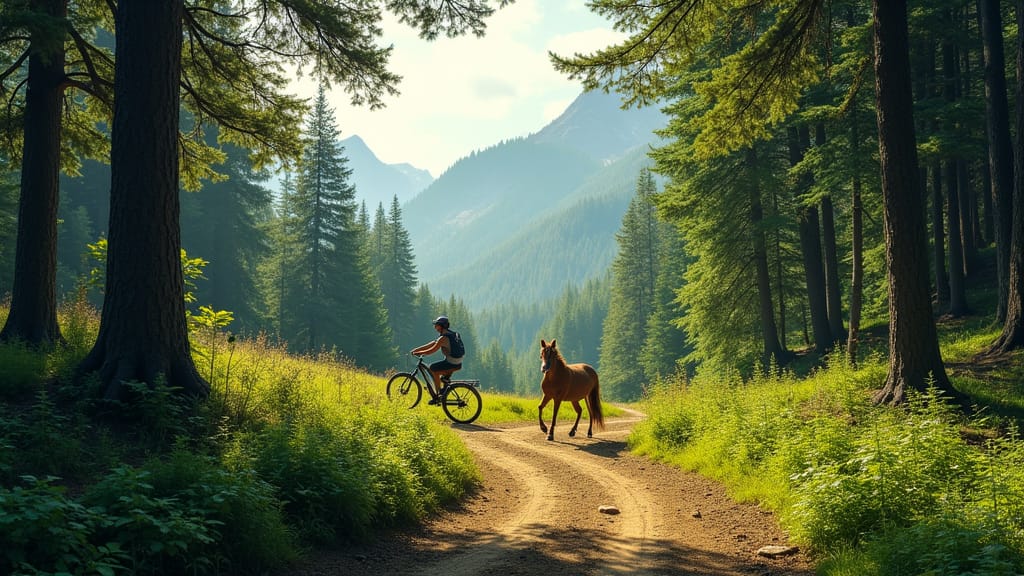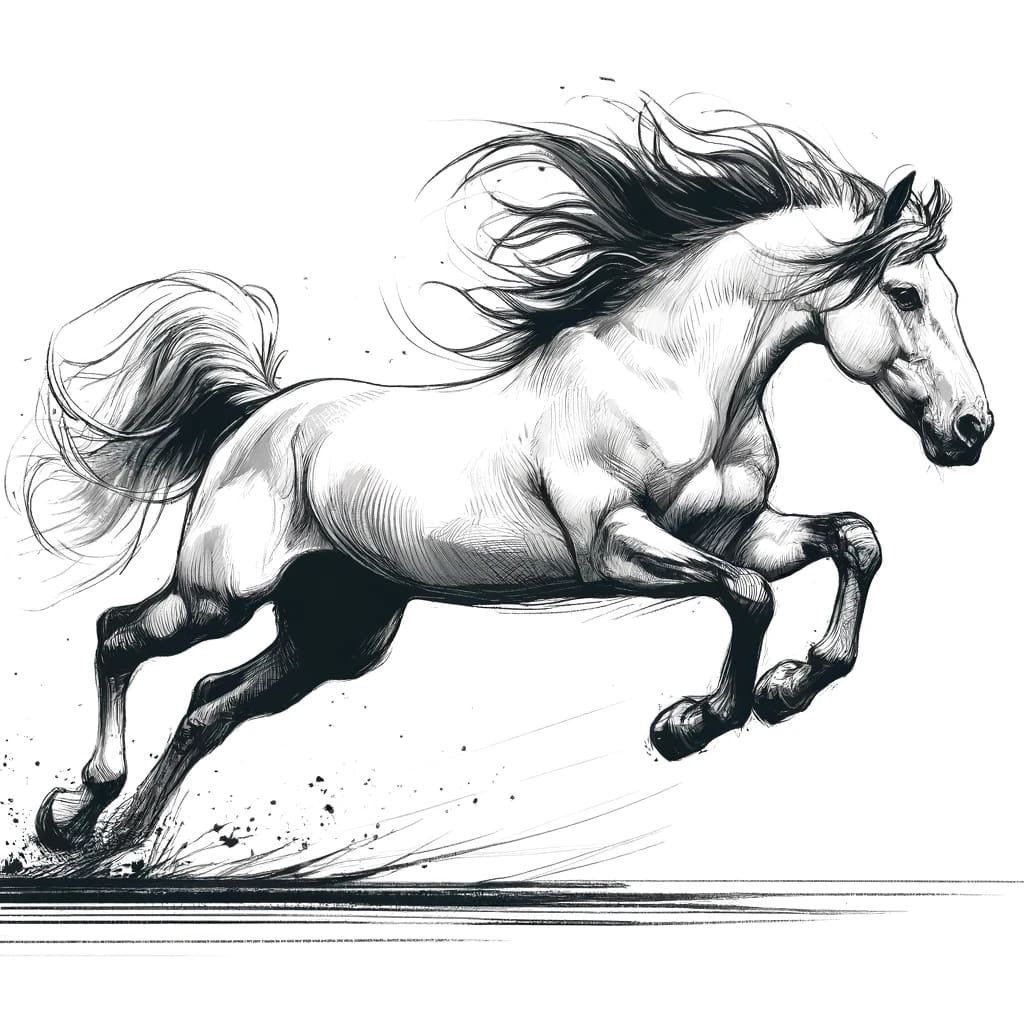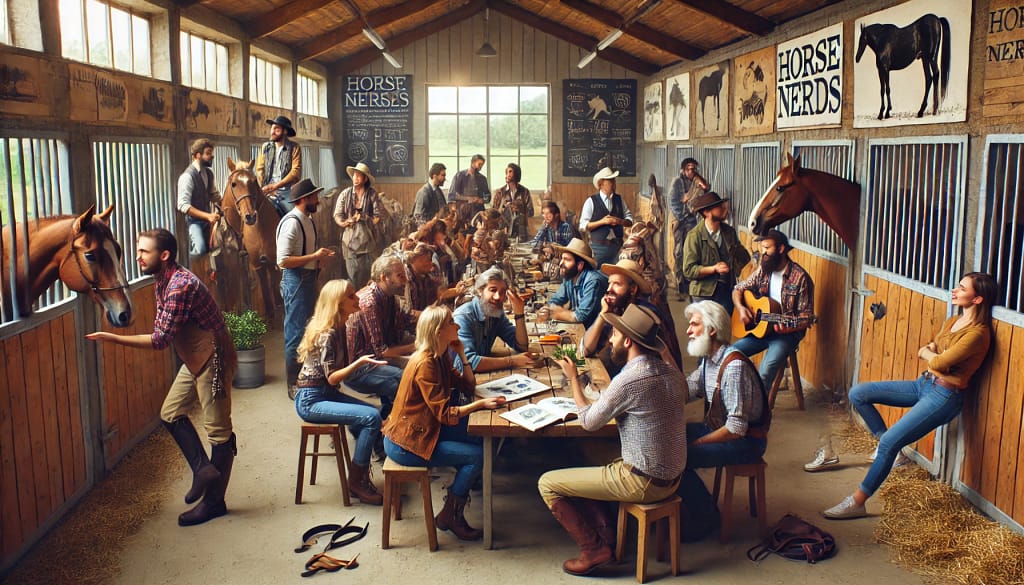Getting out into nature on a trail ride really brings out a sense of freedom and adventure. Whether I’m hitting forested singletrack on a mountain bike, tackling rolling hills on horseback, or just hiking through the wilderness, trail riding shakes up my routine and gets me up close with beautiful scenery. But pulling off a smooth, fun adventure takes a bit of planning. Trust me, it pays off to prep ahead so you can focus on the adventure, not the mishaps. I’ll lay out what I’ve learned about planning the perfect trail riding experience, covering the gear you need, how to choose routes, ways to stay safe, plus a few easy tips to take your experience up a notch.

Choose Your Trail Riding Style and Route
Trail riding is pretty broad, so the first thing I recommend is figuring out what kind of ride you’re after. Are you looking to ride a mountain bike, hop on a horse, or just head out with sturdy boots for a good hike? Each style has its own vibe and its own set of gear. Once you’ve decided, it’s time to look for a trail that matches your skill level, stamina, and interests.
Online resources like AllTrails and Trailforks are super handy if you want detailed maps and user reviews. Park websites also offer up-to-date info on closures or trail conditions. Personally, I like reading a mix of reviews and ranger updates before I decide on a trip, just to make sure I’m not walking into any surprises such as closed bridges or muddy patches. If you’re new, starting with a beginnerfriendly trail helps you build skills without feeling overwhelmed. Seasoned riders or hikers might want a bigger challenge, so check out elevation charts and distance markers before committing.
Additionally, don’t forget to consider the type of scenery or wildlife you want to spot on your ride. Some trails lead through dense forests filled with birdlife, while others wind alongside rivers or up ridgelines with panoramic views. If you’re into photography or simply love changing landscapes, factor in these details when picking your route. Sometimes a slightly longer trail is worth it for those eye-catching views or peaceful moments.
What Gear Do You Need for Trail Riding?
The right gear makes a big difference, especially if you end up stuck out there longer than planned. My packing list always shifts a bit depending on the type of ride, but here are the basics anyone can use as a foundation.
- Navigation tools: A GPS device, compass, and a printed trail map. Even with a phone, I don’t head out without a backup. Dead batteries can cut your adventure short, so redundancy pays off.
- Hydration: Water bottles or a hydration pack are essential. For longer rides, toss in a water filter or purifier tablet so you can top up at streams you find along the way.
- Weather appropriate layers: Lightweight, moisturewicking shirts, a rain jacket, plus something warm. Weather can flip on you fast, especially at higher elevations.
- First-aid kit: A compact kit with bandages, antiseptic, tweezers, and blister relief is a lifesaver. I always check the contents before heading out and top up as necessary.
- Repair kits: Cyclists need patch kits, a pump, chain lube, and spare tubes. Equestrians should carry a basic hoof pick, spare reins, and vet wrap. Hikers usually do fine with multitools and paracord.
- Food: Energy bars, trail mix, and something salty. I always bring a little more than I’ll need. You burn more calories than you think on trail adventures.
If you’re planning on staying overnight, toss in a headlamp, extra batteries, a small stove, and a light sleeping bag. Take along an emergency blanket or bivy sack for backup warmth. Realistically, it’s better to have a little too much than to wish you’d packed more.
Don’t forget a small trash bag to pack out what you bring in, and a camera or binoculars if you’re hoping to track down wildlife or simply document the adventure.
Before You Go? Pre-Trip Prep That Matters
Prepping isn’t just about packing—it’s also about making sure you’re ready for surprises. Letting someone know your route and estimated return time is a habit I never skip. If you’re riding in a group, double-check everyone has the essentials, since there’s usually that one person who leaves their raincoat in the car.
Checking weather forecasts on sites like Weather Underground can give you a good heads-up on conditions, but local ranger stations have the latest info. Be ready to pivot; if it’s stormy, switching to a safer or easier trail just makes sense. For those going into the backcountry, learning a little about local wildlife and plants (like poison ivy or aggressive wasps) is a smart move. I usually scan online resources like the National Park Service site for any special warnings or seasonal issues. Sometimes you can stumble upon tips from other hikers about current trail hazards.
If you’re venturing into unfamiliar terrain, consider studying the area’s map at home, memorizing big landmarks like rivers or major junctions. It helps if your map skills get rusty when you’re tired or the weather turns tricky. Double check park regulations about pets, fires, and camping—the rules often change by season or smoothed out for conservation reasons.
Trail Riding Safety or how to Stay Smart on the Trail
Trail safety covers more than just watching your footing. I’ve found these points are super important for having a safe ride and making sure everyone has a good time:
- Stay on marked trails: This reduces the risk of getting lost and helps avoid damaging fragile habitats. Bushwhacking is a quick way to make a short trip longer and riskier than planned.
- Keep aware of your surroundings: Trail conditions change fast. Watch for loose rocks, muddy spots, or roots, and let others know if you spot something sketchy ahead. Always be ready to help each other.
- Carry a whistle and flashlights: Super useful if you get separated or are out after dark. Whistles carry further than your voice, especially in thick woods. Headlamps can give you both hands free.
- Know your signals: Horseback and bike riders usually call out intent (like “passing on your left!”), so everyone stays alert and avoids surprises. Stepping to the side for faster trail traffic is just good etiquette.
- Be wildlife smart: Keep food packed away, make noise in dense forests, and know how to react if you stumble across animals like snakes, bears, or moose. Local park boards often post safety tips—worth checking out.
I try to keep my phone in airplane mode to save battery but turn it on at regular intervals for a location check-in. Signal isn’t everywhere, so consider a personal locator beacon for really remote trips. When in doubt, err on the side of caution and head back early if something seems off.
Weather on the Trail, Handling Sudden Changes
Weather can switch up quickly on trail rides, especially if you’re up in the hills or mountains. Sudden temperature drops, pop-up storms, or even just chilly fog can turn a fun ride into a pretty rough time. Early starts help dodge afternoon storms, and I always pack rain gear even if the sky looks crystal blue.
If I hear thunder, I make for shelter and avoid open meadows, high ridges, or lone trees. On long rides, having a tarp or emergency blanket makes waiting out bad weather less miserable. For extra info on reading the forecast, I check out local news stations or weather apps right before setting out, and sometimes I’ll ask park rangers for up-to-the-minute advice.
If you’re caught out in steady rain, layer up and keep moving to stay warm. On the flip side, hot sunny days mean regular breaks in the shade, drinking plenty of water, and applying sunscreen often. Keep an eye out for any signs of heat exhaustion or dehydration among your group.
Common Trail Riding Challenges and How to Handle Them
Even the bestplanned trips throw surprises your way. Here are some quick ways I deal with the usual trouble spots.
- Gear malfunctions: Zip ties and duct tape keep me riding or hiking even with a broken strap or loose bolt. A multitool works miracles when you’re miles from your car; a little improvisation can get you back to the trailhead safely.
- Navigation hiccups: If I lose the trail, I head back to my last recognizable landmark and check my map, taking my time. Panic only makes things worse. Take a few deep breaths, reassess, and trust your navigation tools.
- Low energy: If I’m wiped out, I take a break, fuel up on snacks, and drink water. Short, regular stops make a huge difference, especially on tough climbs or long rides.
- Trail traffic: Some spots get packed in high season. I pick less popular trails when I can, or start early to beat the crowds, especially if I want to spot wildlife. Don’t hesitate to change your plans if a trail is too busy for your liking.
Dealing with Unexpected Weather
Surprise rainstorms or heat waves can slow any trip. Rain gear, sun hats, and sunscreen stay in my pack no matter the forecast. If storms roll in, I pick a safe spot to wait it out, ideally off high ground and under solid tree cover. Steer clear of the tallest trees and find shelter with a cluster of smaller trees if possible.
In extreme heat, don’t be afraid to turn around and cut your day short. Safety always comes first, and there’s no shame in taking it easy if the elements get too intense.
Bumps, Bruises, and Minor Injuries
Minor cuts and scrapes are almost unavoidable on longer rides. I keep a small firstaid kit handy and clean wounds right away to dodge infections. For twisted ankles or sore muscles, wrapping with a bandage and taking slow, careful steps usually gets me back to the trailhead. Knowing some basic first aid can really ease worries and keep you moving.
Kicking It Up a Notch with Tips From Experience
After a bunch of rides, I picked up a few tricks that might help your next adventure run smoother:
Check your gear the night before. This goes for everything. Tire pressure, saddle tightness, hydration bladders, and batteries for your GPS or headlamp. One missed step can mean a headache later.
Download offline maps. Cell service disappears fast as you get deeper into the wilderness, so I always download maps directly to my phone. Sometimes I print a backup copy just in case.
Have a post-ride plan. Extra water and snacks in the car or at camp make the tail end of a long ride way nicer. If it’s a hot day, tossing a few cold drinks in a cooler is a treat you’ll look forward to.
Know the local rules. Areas with mixed riders and hikers usually post etiquette guidelines—check trailhead boards or park websites for any updates. That way everyone gets along and enjoys the trail.
Take pictures of the plants and animals you come across, and jot a few notes at the end of the day. Tracking your favorite routes or sightings builds memories and sometimes helps plan future rides.
Pack an extra layer or buff for changing weather, and consider picking up a multiuse item like a bandana—it can work as a sweatband, napkin, emergency sling, or just a way to wash up after a dusty ride.
Trail Riding Adventure FAQ
Some common questions pop up for anyone organizing their first or fiftieth trail outing. Here are a few that come up most often:
Q: What’s the best time of year for a trail riding trip?
A: Spring and fall usually bring the best conditions. Cooler temperatures, fewer bugs, and lighter crowds make for a sweet ride. Summers can get hot, and winter rides call for extra gear and careful planning.
Q: Do I need special skills or training?
A: Beginner trails are open to just about everyone. Still, brushing up on basic bike skills, horse handling, or navigation is a good boost for your confidence and safety, especially on new or challenging terrain.
Q: How do I find out if a trail is dogfriendly, horseapproved, or bikelegal?
A: Look for details on park websites or apps. Trail reviews often mention whether leashed pets, horses, or bikes are allowed. Local ranger offices are another great resource if you still have questions—just check in before you go.
Let us Wrap it Up Making Trail Riding a Memorable Adventure
Planning ahead makes trail riding way more fun and way less stressful. With the right gear, a smart route, and a weather eye on the forecast, you’ll be set up for a hasslefree adventure. Pick the right trail, be honest about your skills, stay flexible, and bring along a sense of curiosity. Those simple choices turn a day in the wild into something you’ll remember for years.
Grab your map, check your kit, round up your trail buddies, and soak up everything the great outdoors has to offer. Whether you’re heading out for a couple of hours or a whole weekend, every ride is a chance to get outside, see something new, and make great memories. Happy trails!



